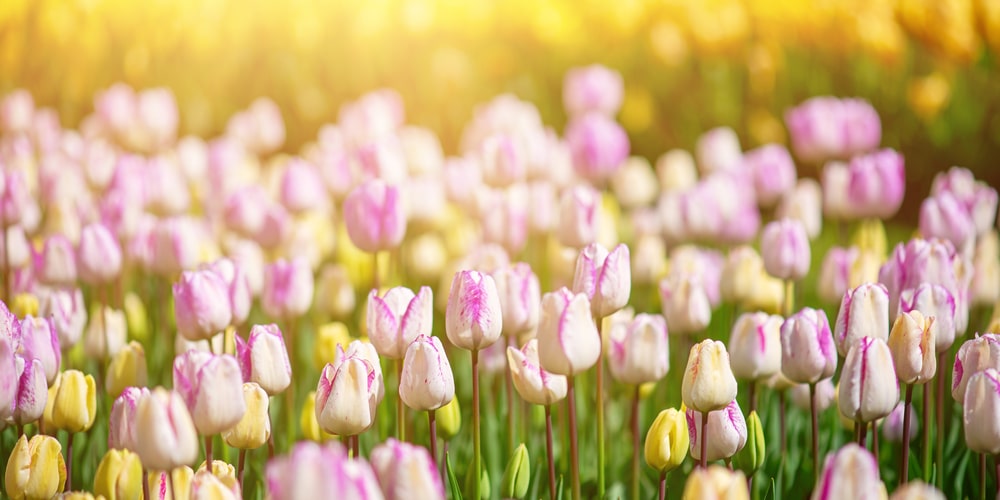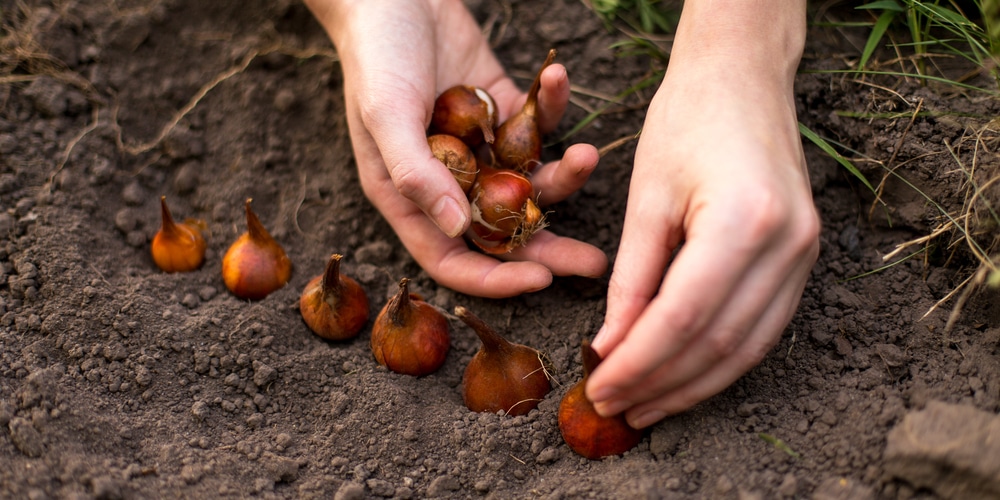They come in a rainbow of colors, a variety of sizes, and different flower forms. Truly speaking, there is just about everything to love tulips for. From their enchanting appearance to the fact that they are a great way to welcome the earth back from its winter sleep, tulips make a great addition to any garden.
If you’ve just had the idea to plant tulips in Indiana and are wondering when you should expect the flowers to open up, you’ll want to stick around to get your answer and more.
When do tulips bloom in Indiana?

In Indiana, tulips bloom from late March through early May. Of the most important factors that determine the blooming time is the variety of the tulip that you choose to go with.
Miniature tulips such as the single early tulips and double early tulips are the earliest. These will flower as early as March. You may also love the fact that they can be grown indoors in pots.
There are other varieties such as the Triumph tulips and Darwin hybrids that bloom in April, hence being classified as mid-season bloomers. The flamboyant parrot tulips and lily flowered tulips are the last since they stay without flowering till late April to May.
Types of tulips that you can plant in Indiana
In this section, we are going to have a closer look at the main details of the tulips that we mentioned in the previous section.
1. Single early tulips (early bloomers)
These tulips have one flower on each stem, with the sizes of the stems ranging anywhere from 10 to 16 inches. They come in a variety of colors which can be anything from yellow and white to dark purple and salmon. Even though this variety does not do well in mild-to-hard-winter regions, it should thrive when grown indoors in pots.
2. Double early tulips (early bloomers)
With 4-inch wide peony-like flowers that have a similar color range to the single early tulips, these flowers are also a great choice for Indiana tulip lovers. Double tulips have outstandingly short stems that will bear double flowers, and they thrive best in places with cool winters, so your best bet would be to grow them indoors.
3. Triumph tulips (mid-season bloomers)
These typically have a 20-inch-tall stem that bears a single flower. The colors of the triumph tulip can be anything from white and red to yellow. Some triumph tulips are bi-colored, so be sure to consider those as well, if color variety captivates you.
4. Darwin hybrid tulips (mid-season bloomers)
If brightly-colored flowers are your thing, then Darwin hybrid tulips will get the job done for you. With stems that have a tallness range of 24-28 inches and a color range of red to scarlet-orange, these flowers are absolute beauties.
5. Parrot tulips (late bloomers)
These are known for their frilly flowers that are deeply fringed. Their colors can be anything from vivid orange to green. In some cases, parrot tulips will have a tint of purple on their outer regions.
6. Lily flowered tulips (late bloomers)
With the capability to reach a height of 20-30 inches, these blossoms can be excellent cut flowers. Their edges are finely fringed and can have contrasting colors with the rest of the flower. The main colors that you should expect from lily flowered tulips are hues that range from white to pink, yellow, red, pink, and sometimes even purple.
When is the best time to plant tulips for spring blooms?
If you want your flowers to bloom in the spring, the best time to plant them is during autumn. You should plant before the ground freezes, and preferably mix your varieties.
That way, you will have tulips with different blooming times opening up their flowers almost throughout the entire spring.
Besides, since the different varieties of tulips are perfect for different settings, you can have those that bloom in an indoor setting and those that will bloom from outside.
Are tulips annual or perennial?
Tulips are basically supposed to be perennials but having undergone hybridizing for hundreds of years, their ability to grow back every year has slackened. As a result, you would have to plant new bulbs every few years to get the best results from your flowers.
Besides, many regions in the United States, Indiana included, have a climate and soil that is not close enough to the original conditions that the tulips grew in naturally. That’s why it can be quite challenging to successfully grow tulips as perennial plants.
Growing tips for tulips
Don’t water if it rains weekly. Only water if there is not enough rain, and keep watering until the ground has frozen.
Avoid overwatering since wet soil is the bane of a tulip’s existence
Plant tulips in well-drained soils. Add material that promotes drainage if necessary
An annual application of compost will come in handy to promote the growth of future blooms with the required nutrients
As the bulbs come out and the leaves emerge during spring, use the same bone meal or bulb food that you used during planting to feed your tulips
When removing any dead flower heads, don’t remove the leaves, since they will help your plants to gather the extra energy that they need to bloom
It’s important to replant the large varieties every few years. Smaller varieties will multiply and spread without requiring much input from you
When do tulips bloom in Indiana: In conclusion
Tulips are great for any garden since they deliver a burst of color to your beds. When planted in clusters, tulips also create a breathtaking visual sensation; plus, their petals will create a stunning effect on the eyes.
Just be sure to pick the right varieties for your area, and you will get the best results out of your tulips. Sometimes, trial and error work wonders, so don’t be afraid to try something new.
Related Article: When to Plant Tulips in Indiana?

